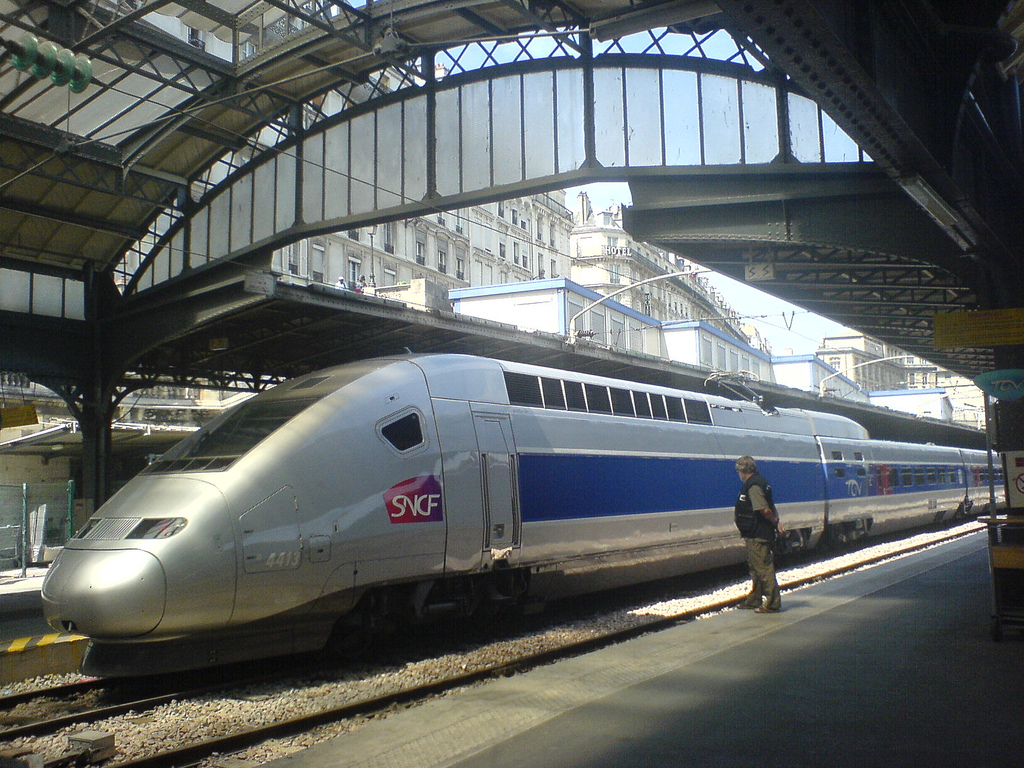Recent developments in train travel mean that the train does not have to be a slow way to get from A to B. If you want to experience some of the fastest trains in the world, continental Europe and Asia are the best places to go. These areas have developed faster and faster trains to help to forge better commercial and social links.
Here is some additional information about the fastest trains in the world:
Shanghai Maglev
The Shanghai Maglev can travel at speeds of 430km/h, although its average operating speed tends to be closer to 251km/h. The train runs on rails using magnetic levitation technology which prevents higher friction levels (which slows other trains down), and therefore allows the train to travel at very high speed. The track runs for around 30km, connecting Shanghai Airport with the city. The journey normally takes about 8-10 minutes.

Shanghai Maglev Train
Talgo 350
The Talgo 350 series which run in Spain are as famous for their distinctive shape as they are for their speed. In front of the driver’s cab, the front end is wedge shaped to reduce air resistance. In Spain, the trains are commonly referred to as El Pato, meaning The Duck, because many residents say that the shape reminds them of a duck’s beak. Similar trains are in operation in Japan, and have earned themselves a near identical moniker.
El Pato has a maximum operational speed of 350km/h, although it is reported that speeds of 365km/h were achieved under safe test conditions.

Talgo 350 – By Peter Christener (Pechristener)” (Own work) [GFDL, CC-BY-SA-3.0 or CC BY-SA 2.5-2.0-1.0], via Wikimedia Commons
The Shinkansen train is Japan’s version of El Pato, and is locally referred to as the “duck-billed platypus”. Although the train topped 400km/h in test runs, maximum speed with passengers is usually 320km/h. The 15metre long “nose” of the train also helps to reduce the affects of a phenomenon known as tunnel boom, which is created when a high speed train enters a tunnel.
E5 Series Shinkansen Train.
THSR 700 T
The THSR 700 T runs on a high-speed line between Taipei and Kaohsiung. Whereas the journey normally takes around 4 hours by standard train, the high speed train cuts the journey down to just 90 minutes. Investment costs for the line and the 30 trains which run on it topped $3.4bn, however the Taiwanese authorities believe that it was worth it for the economic benefits of improving the connection between the two cities.

THSR 700 T – By Rsa (Rsaが撮影) [GFDL or CC-BY-SA-3.0], via Wikimedia Commons
The Harmany CRH is the second fastest train in the world. In test runs, the vehicle managed to travel at 486.1km/h, although safety restrictions prevent it from travelling this fast when carrying passengers. Nonetheless, paying customers can still enjoy speeds of up to 380km/h, which make it rather difficult to enjoy watching the scenery out of the window.
The design of the train is intended to be vibration free, so it is one of the smoothest train rides around. It operates between Beijing and Shanghai.

Harmony CRH 380A – By Alancrh (Own work) [CC BY-SA 3.0 or GFDL], via Wikimedia Commons
The Valero E is another train that has topped 400km/h in test conditions. When it was first introduced, it was the world’s fastest train. The first model ran on the Barcelona Madrid line, although other super fast models can be found in other countries in Europe and Asia.
Siemens Valero E – By The original uploader was Sese Ingolstadt at German Wikipedia (Transferred from de.wikipedia to Commons.) [CC BY-SA 2.0 de], via Wikimedia Commons
The TGV POS holds the official speed record for a passenger train on conventional rails. On a test run, the train manage to reach speeds of 574 km/h. When travelling with passengers, its speed is limited to over 250km/h slower than this, because local regulations only permit speeds of up to 320 km/h. The train is currently used on routes which link France with Germany and Switzerland.

TGV POS – By denisparis (http://flickr.com/photos/denislander/975900097/) [CC BY 2.0], via Wikimedia Commons
